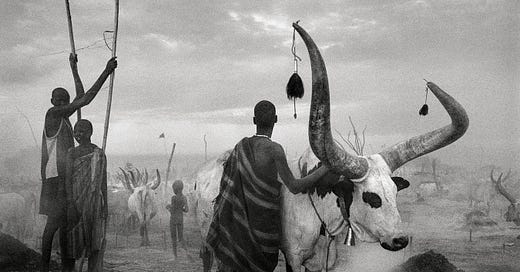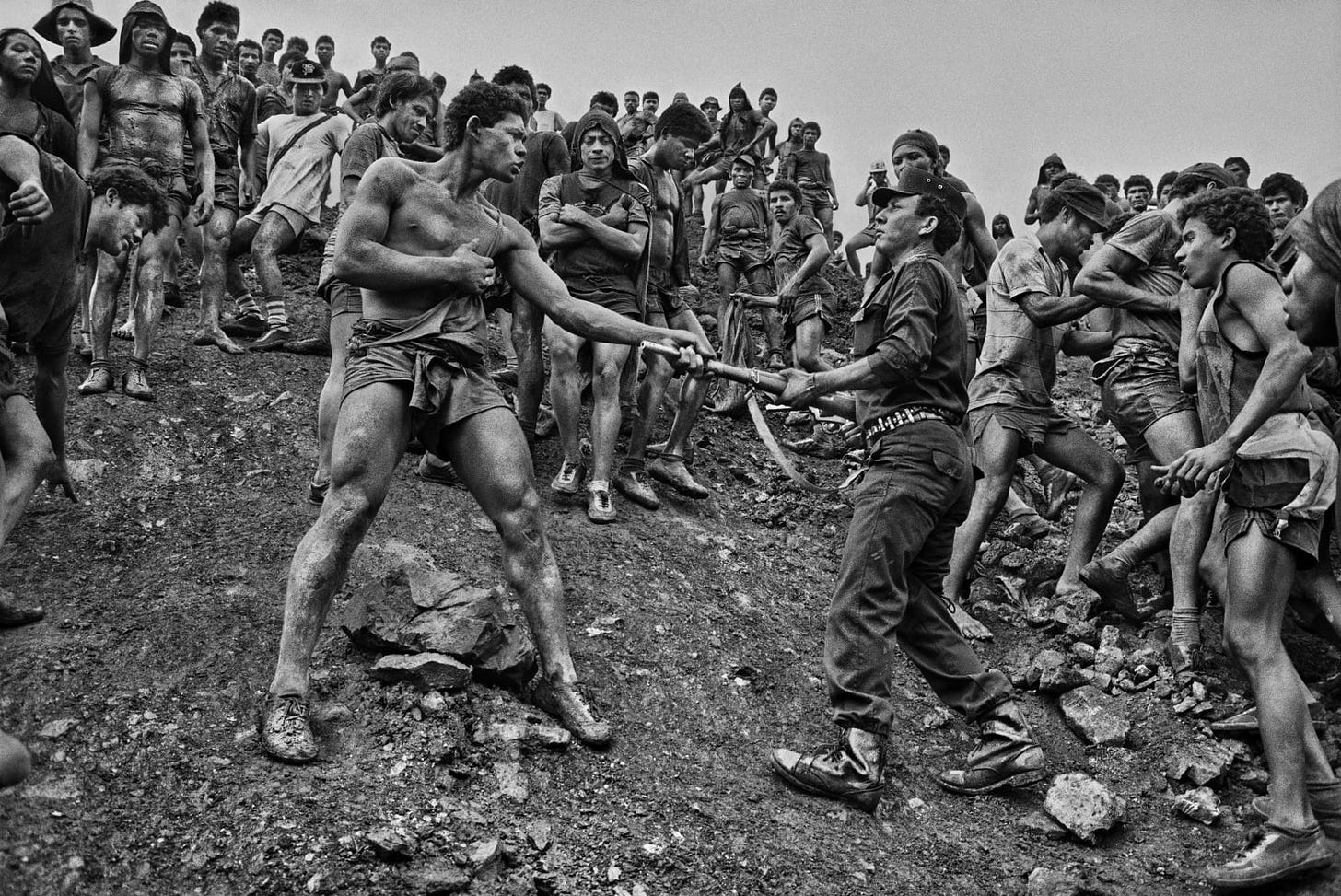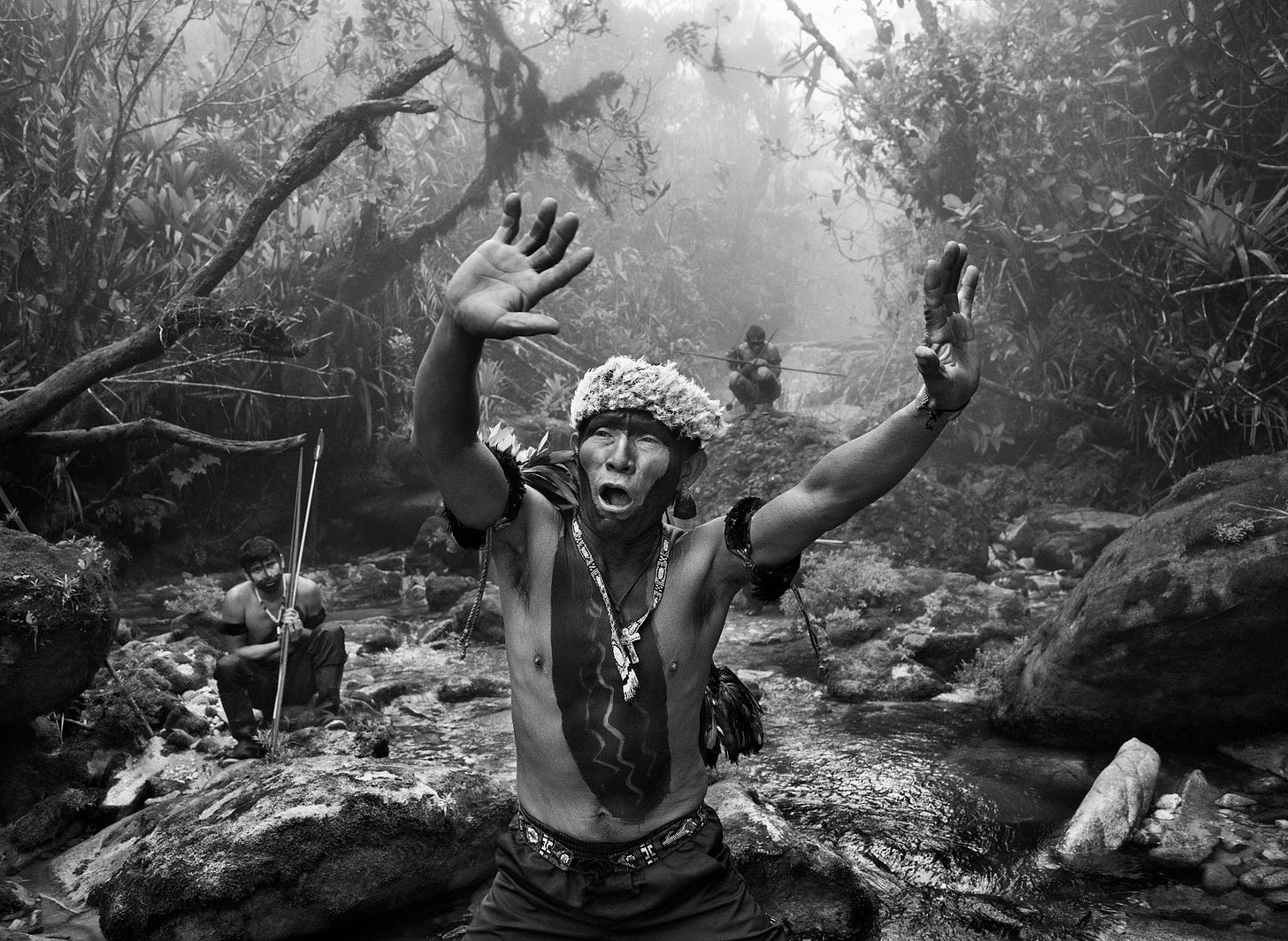Hey there, it’s been a while since our last time together.
May has been a rough one. I spent most of the month in Lagos, Nigeria. And like nowhere else, this city makes me feel there’s no space for writing, reading, or even watching a movie. My brain naturally shuts down when it comes to fiction. The information I get from the streets is too intense, and I need time to simply process it.
As said, I didn’t write for the entire month, so bear with me if this is a bit longer than usual. There are three things I’d love to talk to you about:
Sebastião Salgado 📸
A city I can’t stop thinking about 🌁
One year of Project Home is coming soon 🎈
Amunì.
A person who made the world his home
As soon as I heard about Sebastião Salgado’s passing, I knew I had to spend a few words on him here.
Years ago, my brother told me to watch The Salt of the Earth. He said he saw a reflection of me in it. So I did.
At the end of the documentary, I was devastated by the images. But more than anything, I felt a wave of determination that only comes from understanding the power of hard choices.
Salgado spent his life documenting the human condition.
From gold miners to civil wars, from workers to unknown tribes. His aim was clear: to place humans at the center of political discourse. Photography was the tool he chose to do that.
Thank you, Sebastião.
Invisible Cities
I lied earlier. I did read something.
One book made it through the chaos: Invisible Cities by Italo Calvino.
Calvino was, and still is, ahead of his time. This small book is full of imaginary cities, but the more you read, the more real they feel.
I want to gift you my favorite: Despina.
Italo, forgive me for my blatant copy-paste, but I’m sure someone here will relate so deeply that they will walk down to the corner bookstore and get their own copy.
Italian version (Original) below.
Despina can be reached in two ways: by ship or by camel. The city displays one face to the traveler arriving overland and a different one to him who arrives by sea.
When the camel driver sees, at the horizon of the tableland, the pinnacles of the skyscrapers come into view, the radar antennae, the white and red wind-socks flapping, the chimneys belching smoke, he thinks of a ship; he knows it is a city, but he thinks of it as a vessel that will take him away from the desert, a windjammer about to cast off, with the breeze already swelling the sails, not yet unfurled, or a steamboat with its boiler vibrating in the iron keel; and he thinks of all the ports, the foreign merchandise the cranes unload on the docks, the taverns where crews of different flags break bottles over one another’s heads, the lighted, ground-floor windows, each with a woman combing her hair.
In the coastline’s haze, the sailor discerns the form of a camel’s withers, an embroidered saddle with glittering fringe between two spotted humps, advancing and swaying; he knows it is a city, but he thinks of it as a camel from whose pack hang wine-skins and bags of candied fruit, date wine, tobacco leaves, and already he sees himself at the head of a long caravan taking him away from the desert of the sea, toward oases of fresh water in the palm trees’ jagged shade, toward palaces of thick, whitewashed walls, tiled courts where girls are dancing barefoot, moving their arms, half-hidden by their veils, and half-revealed.
Each city receives its form from the desert it opposes; and so the camel driver and the sailor see Despina, a border city between two deserts.
In due modi si raggiunge Despina: per nave o per cammello. La citta' si presenta differente a chi viene da terra e a chi dal mare.
Il cammelliere che vede spuntare all'orizzonte dell'altipiano i pinncaoli dei grattacieli, le antenne radar, sbattere le maniche a vento bianche e rosse, buttare fumo i fumaioli, pensa a una nave, sa che e' una citta' ma la pensa come un bastimento che lo porti via dal deserto, un veliero che stia per salpare, col vento che gia' gonfia le vele non ancora slegate, o un vapore con la caldaia che vibra nella carena di ferro, e pensa a tutti i porti, alle merci di oltremare che le gru scaricano sui moli, alle osterie dove equipaggi di diversa bandiera si rompono bottiglie sulla testa, alle finestre illuminate a pianterreno, ognuna con una donna che si pettina.
Nella foschia della costa il marinaio distingue la forma di una gobba di cammello, d'una sella ricamata di frange luccicanti tra due gobbe chiazzate che avanzano dondolando, sa che e' una citta' ma la pensa come un cammello dal cui basto pendono otri e bisacce di frutta candita, vino di datteri, foglie di tabacco, e gia' si vede in testa a una lunga carovana che lo porta via dal deserto del mare, verso oasi d'acqua dolce all'ombra seghettata delle palme, verso palazzi dalle spesse mura di calce, dai cortili di piastrelle su cui ballano scalze le danzatrici, e muovono le braccia un po' nel velo e un po' fuori dal velo.
Ogni citta' riceve la sua forma dal deserto a cui si oppone; e cosi' il cammelliere e il marinaio vedono Despina, citta' di confine tra due deserti.
One year of Project Home is coming 🎈
When I sent my first newsletter, I was excited. That kind of excitement a new adventure brings, a sprint of adrenaline that pushes all boundaries.
But just an hour later, I was nervous. Terrified.
I didn’t really know what I would write about next. And I had just 13 days to come up with a full story.
Funnily enough, that feeling never left me, but still, I managed to put out 25 episodes, feature great photographers, and bring in more than a thousand of you. That’s wild. Really.
To celebrate, I invite you to send me one photo of what HOME means to you. No description needed, replying to this email is more than enough.
You have time till Thursday, June 5th!
Until the next one,
Much love.
F












Solgado’s work must be some of the most unique, it’s fascinating to look at isn’t it.
Another interesting post! Like it must have been for many people, the news of Salgado's death shocked me. He was definitely one of my long time favorites. I liked the expression 'human condition' that you used, that's exactly what he recorded in his photos.